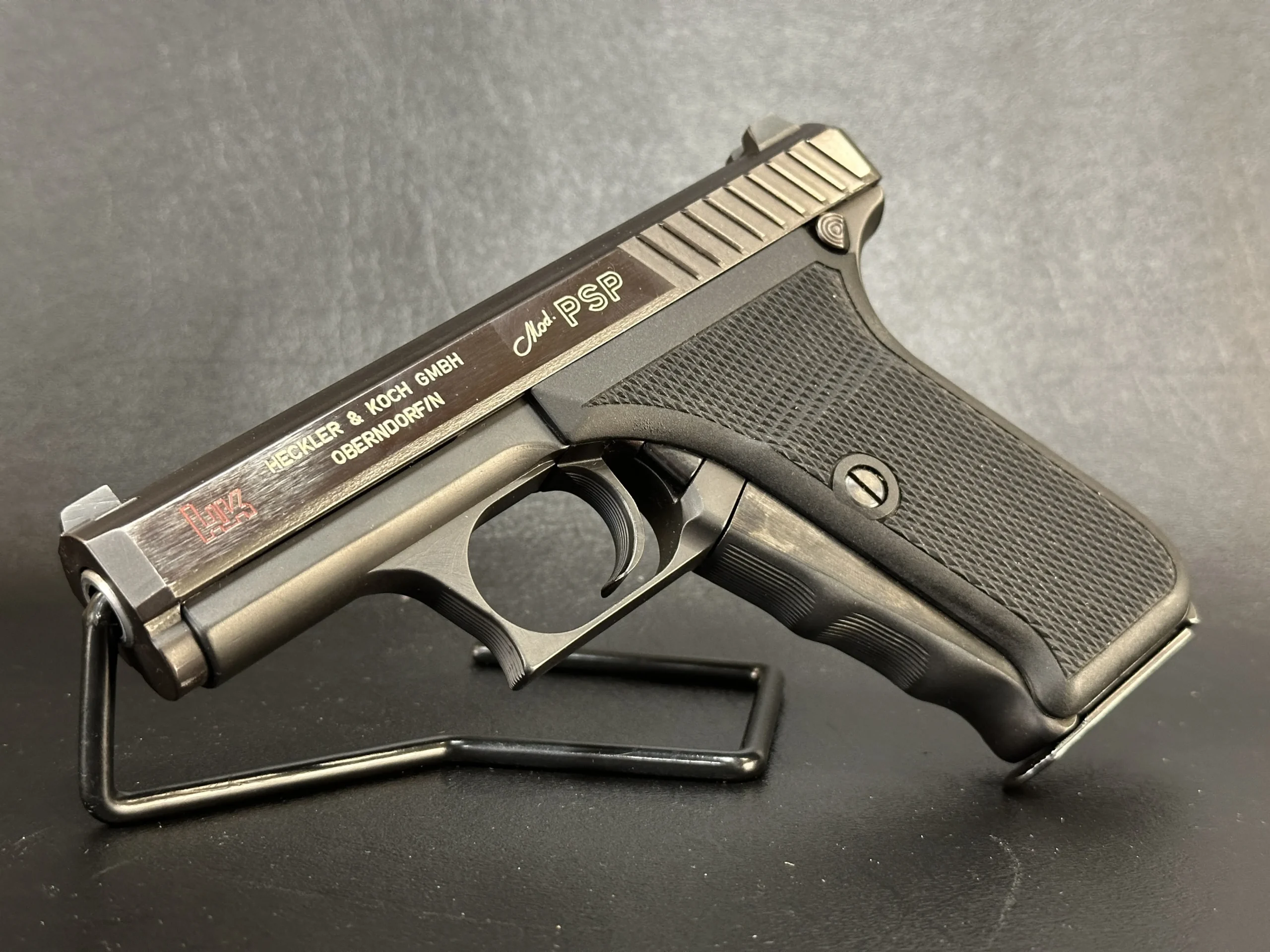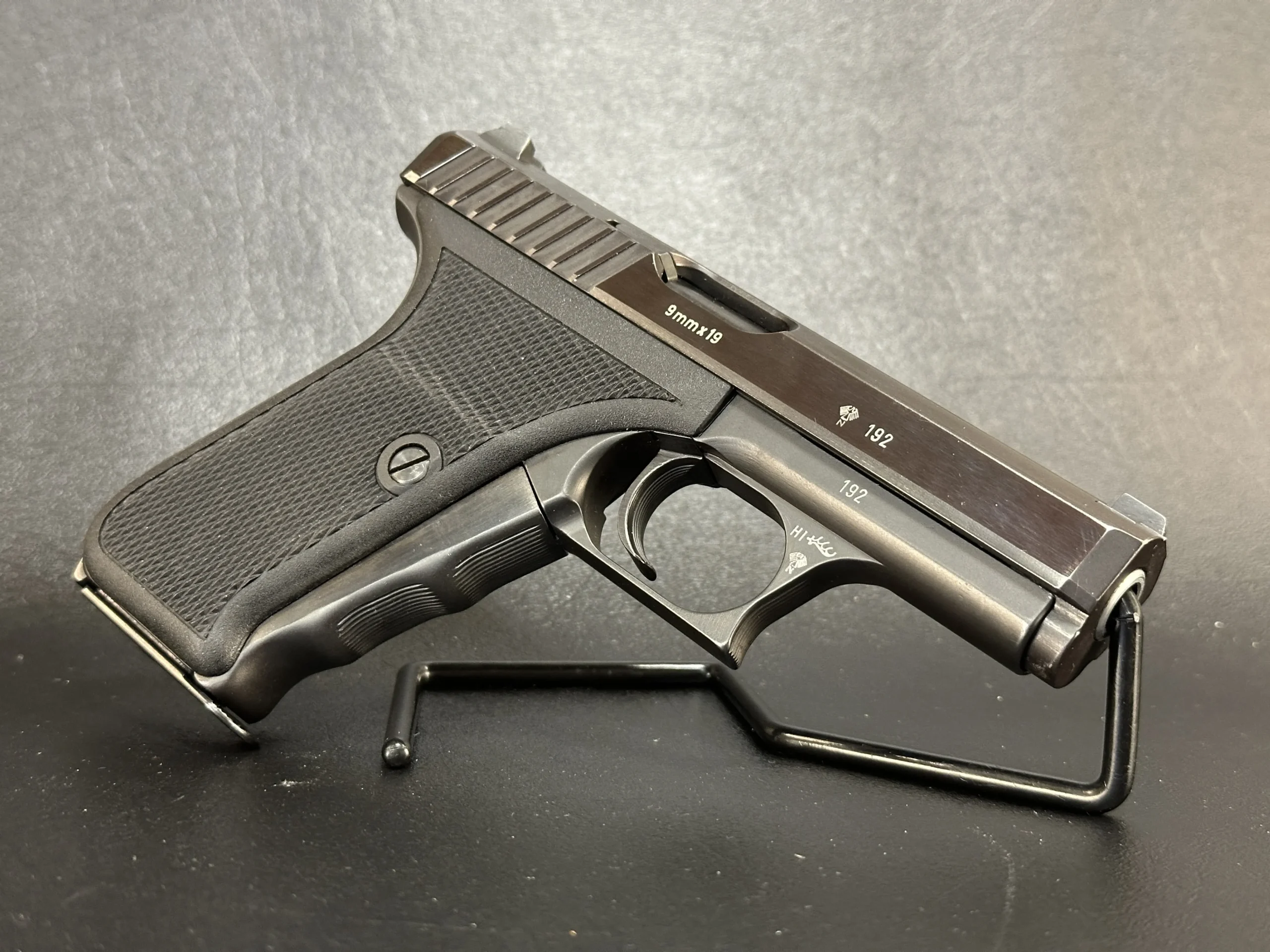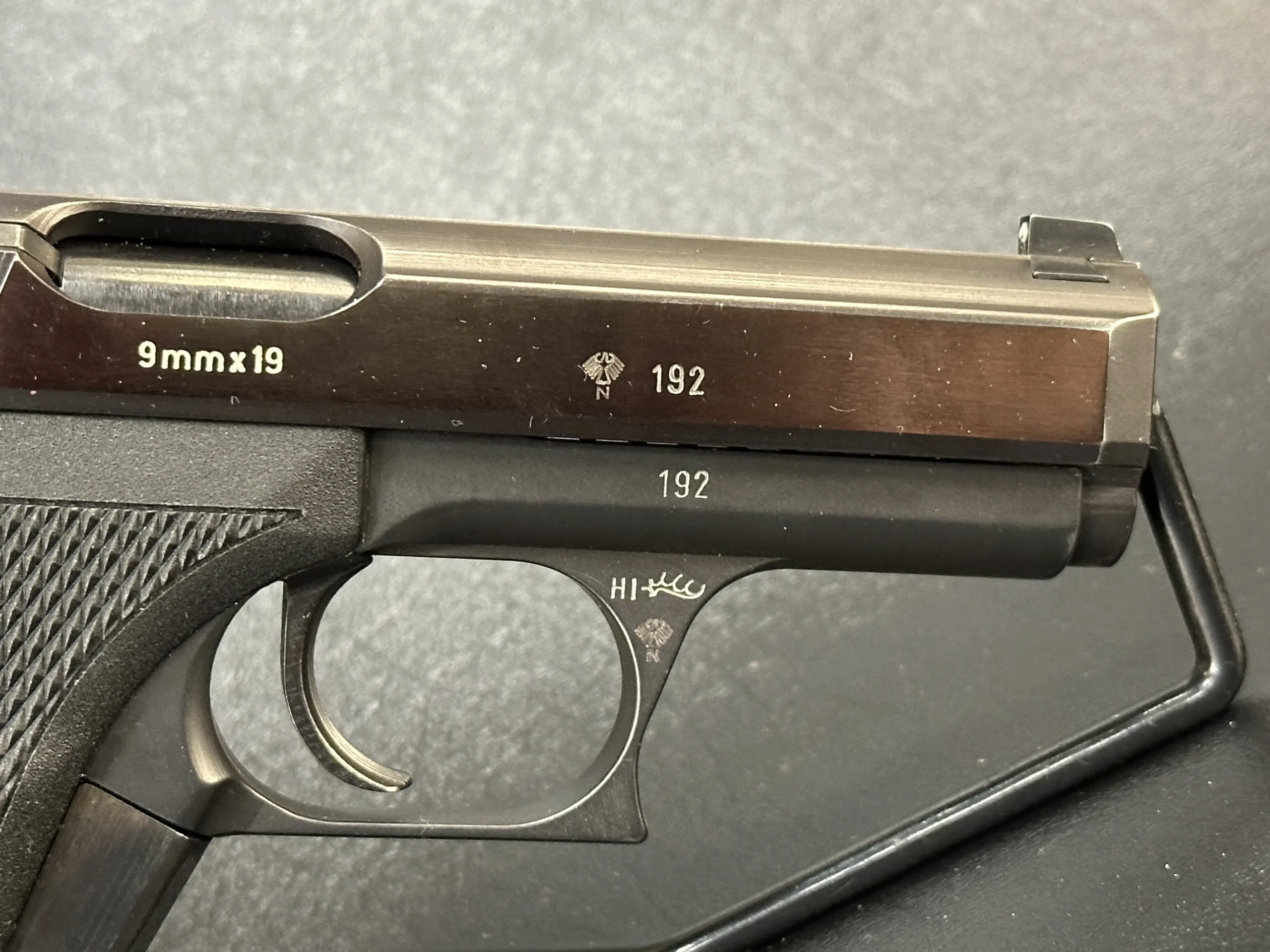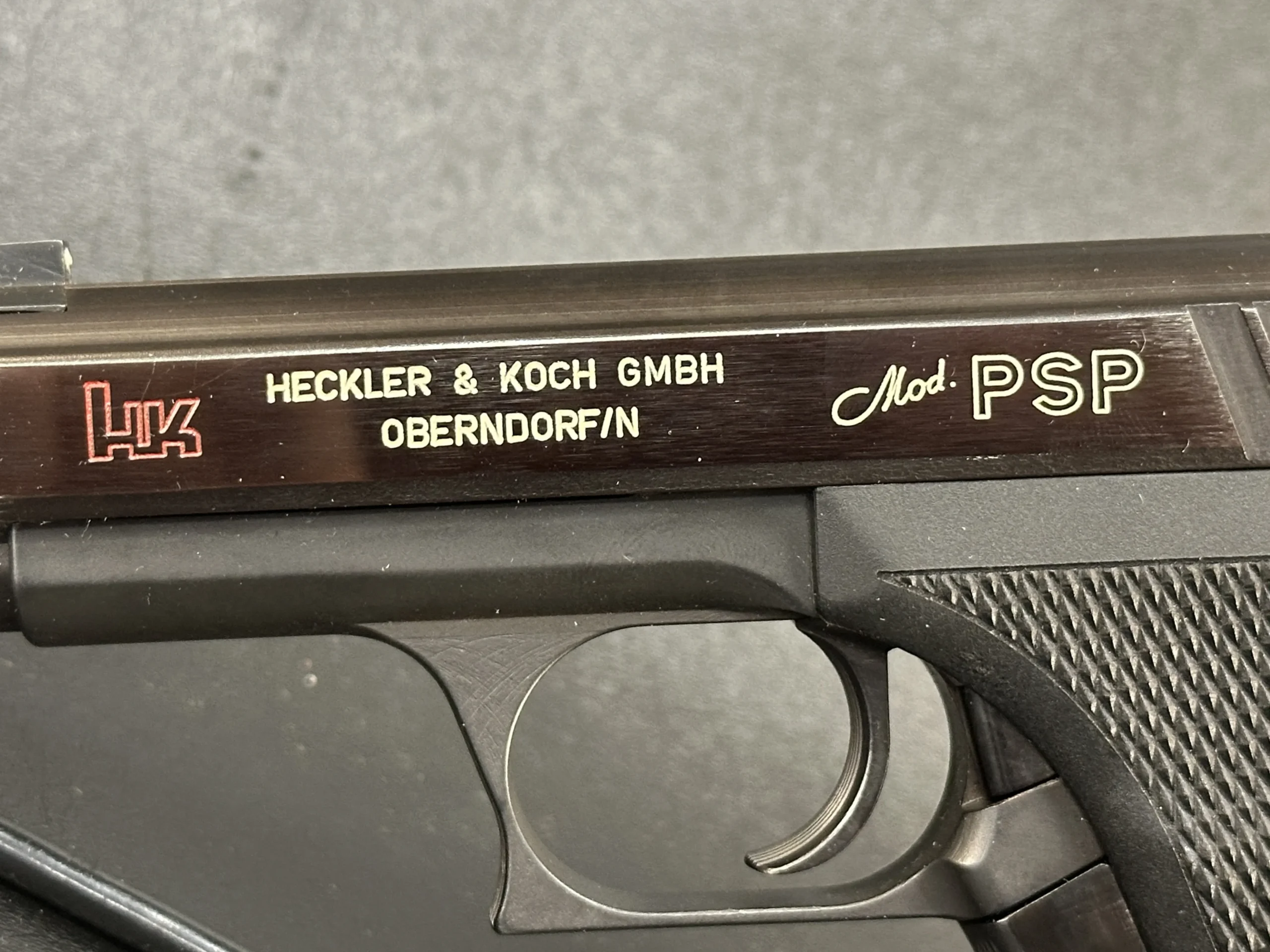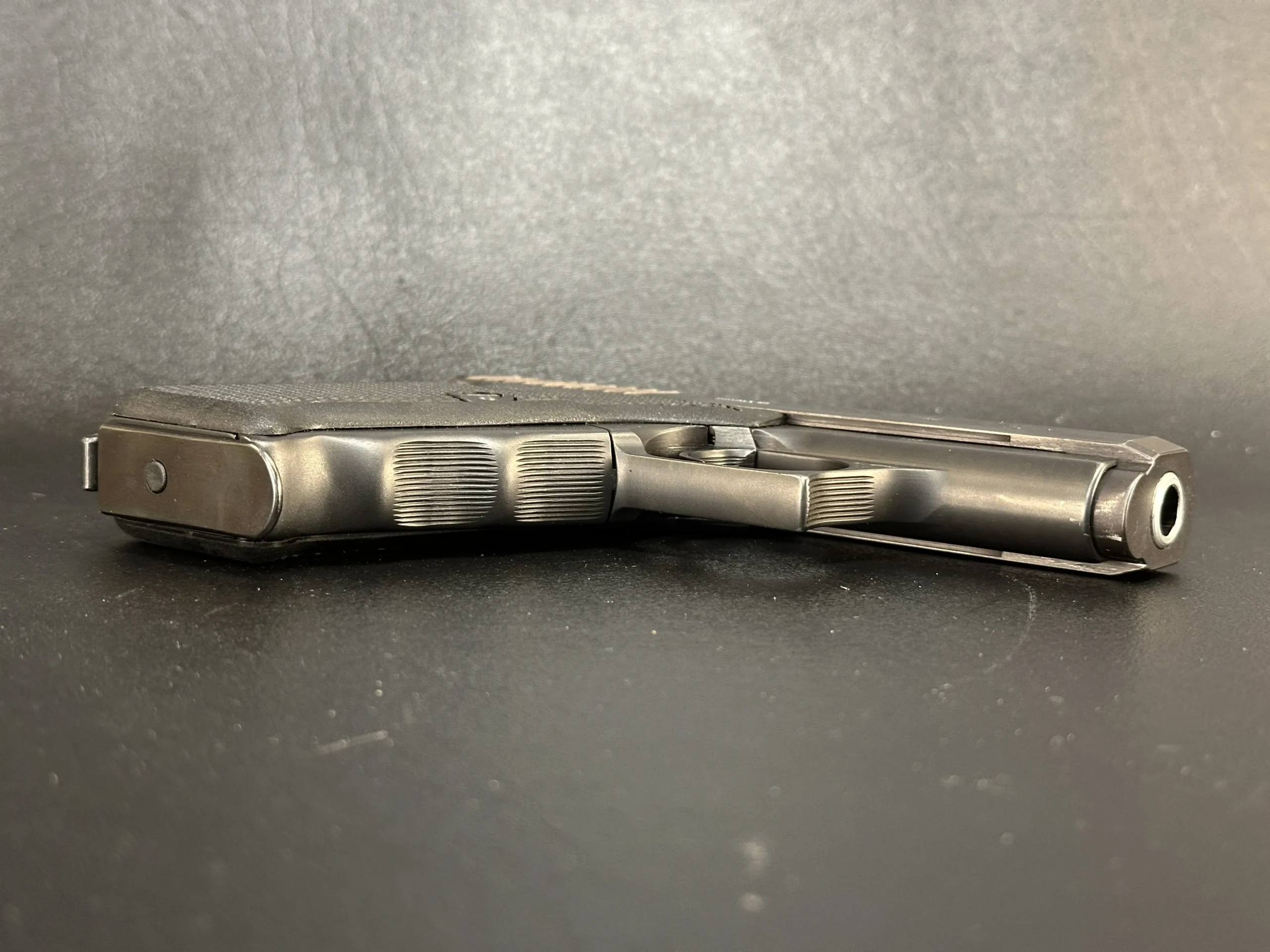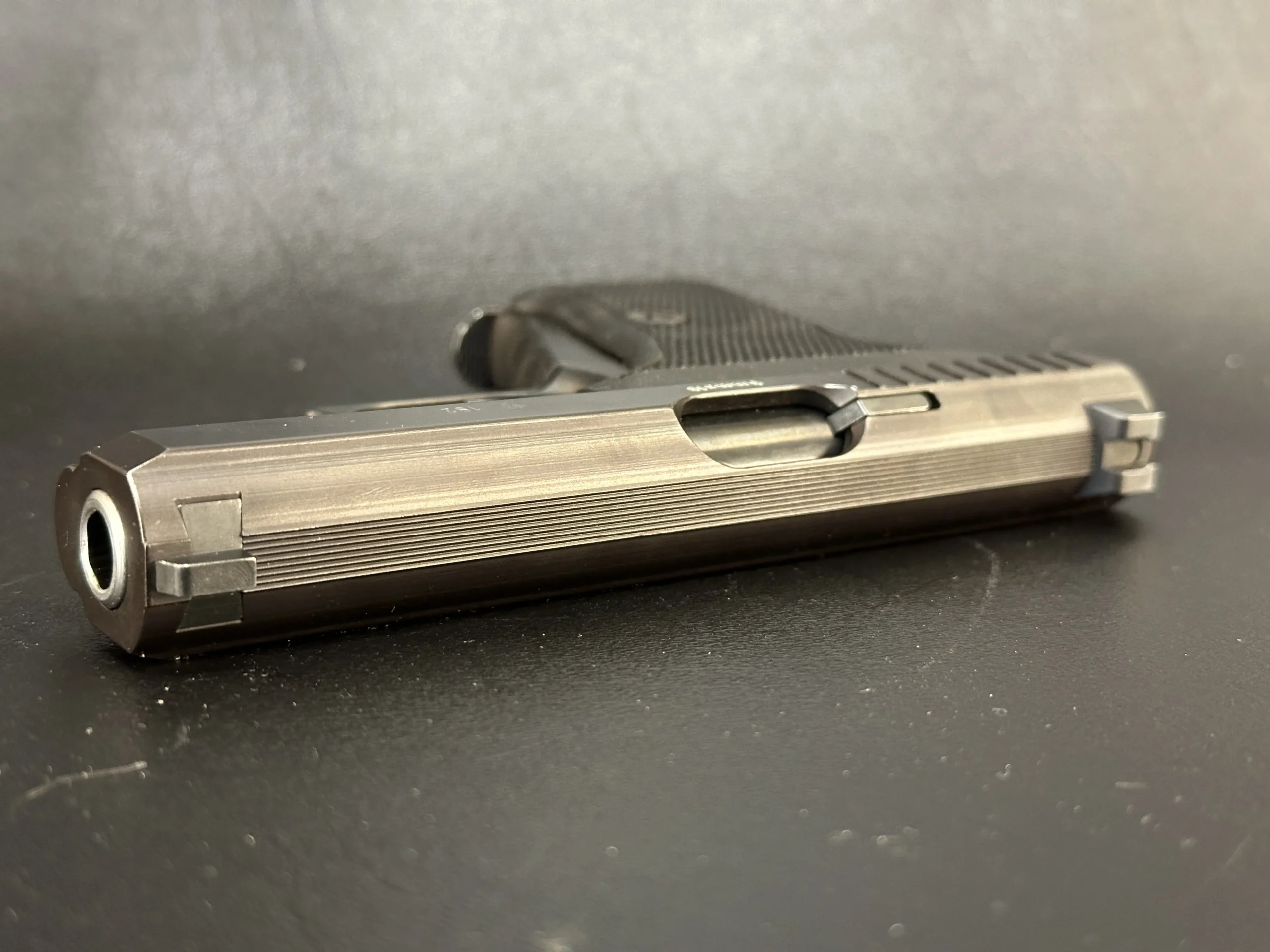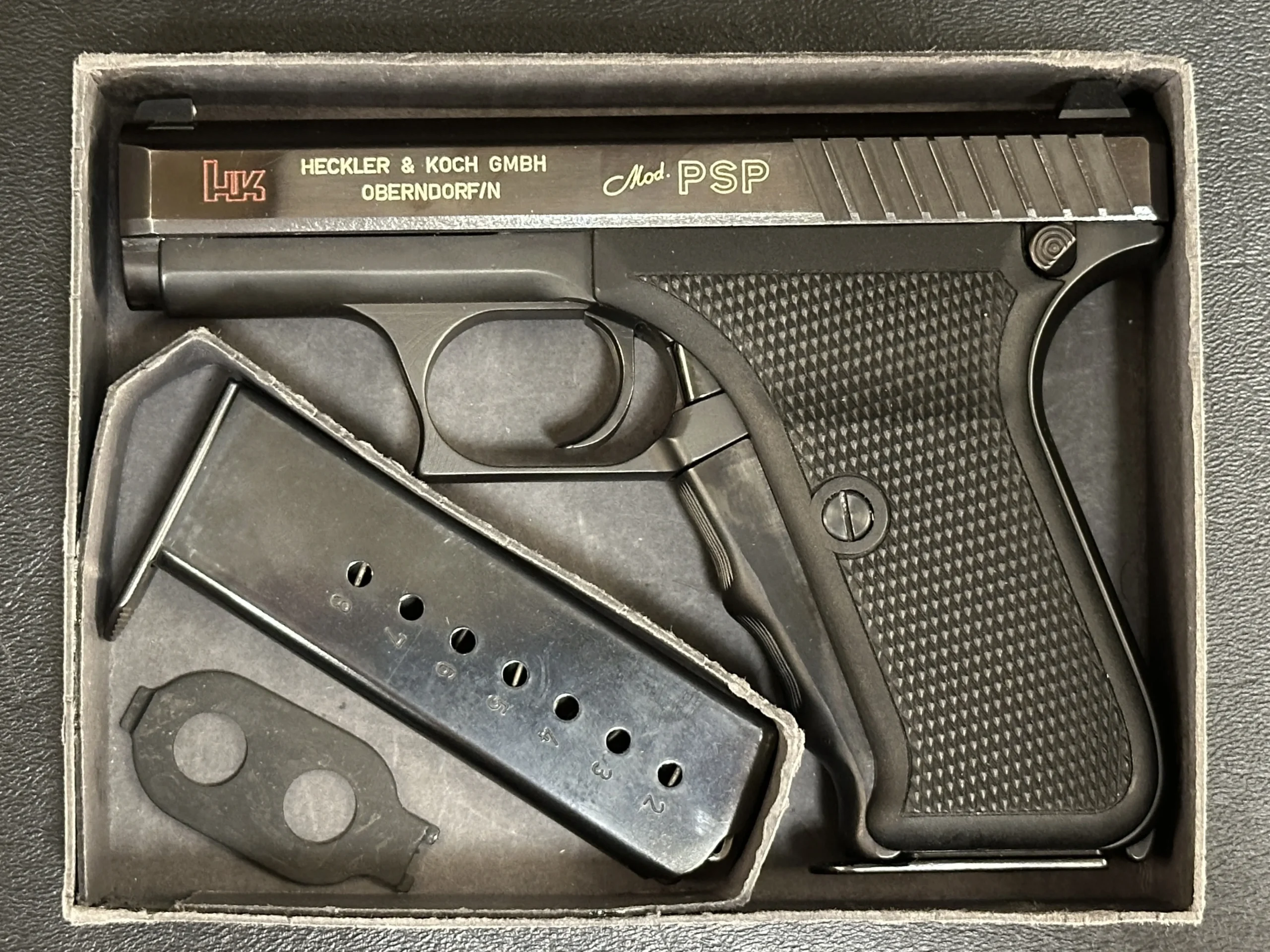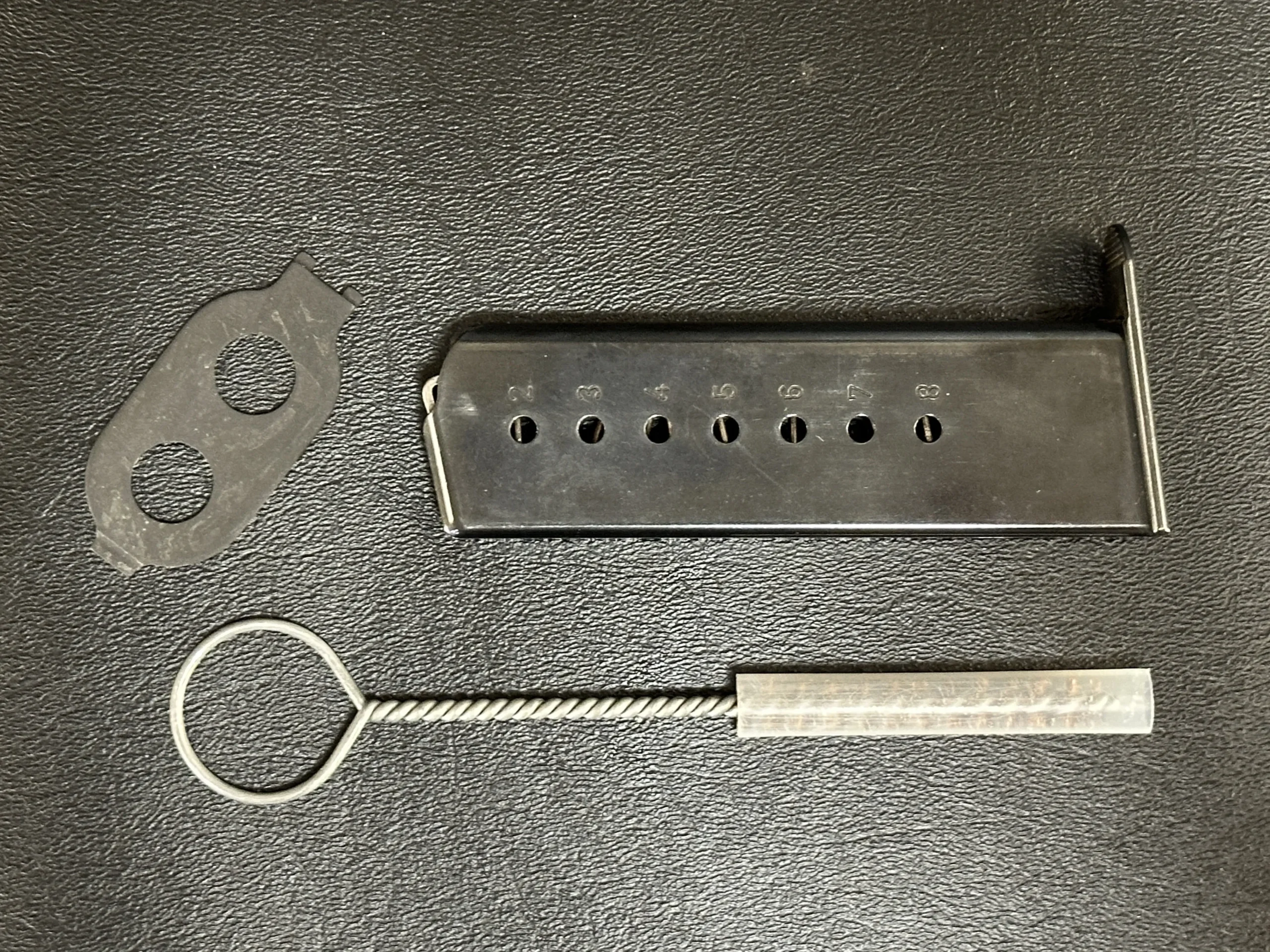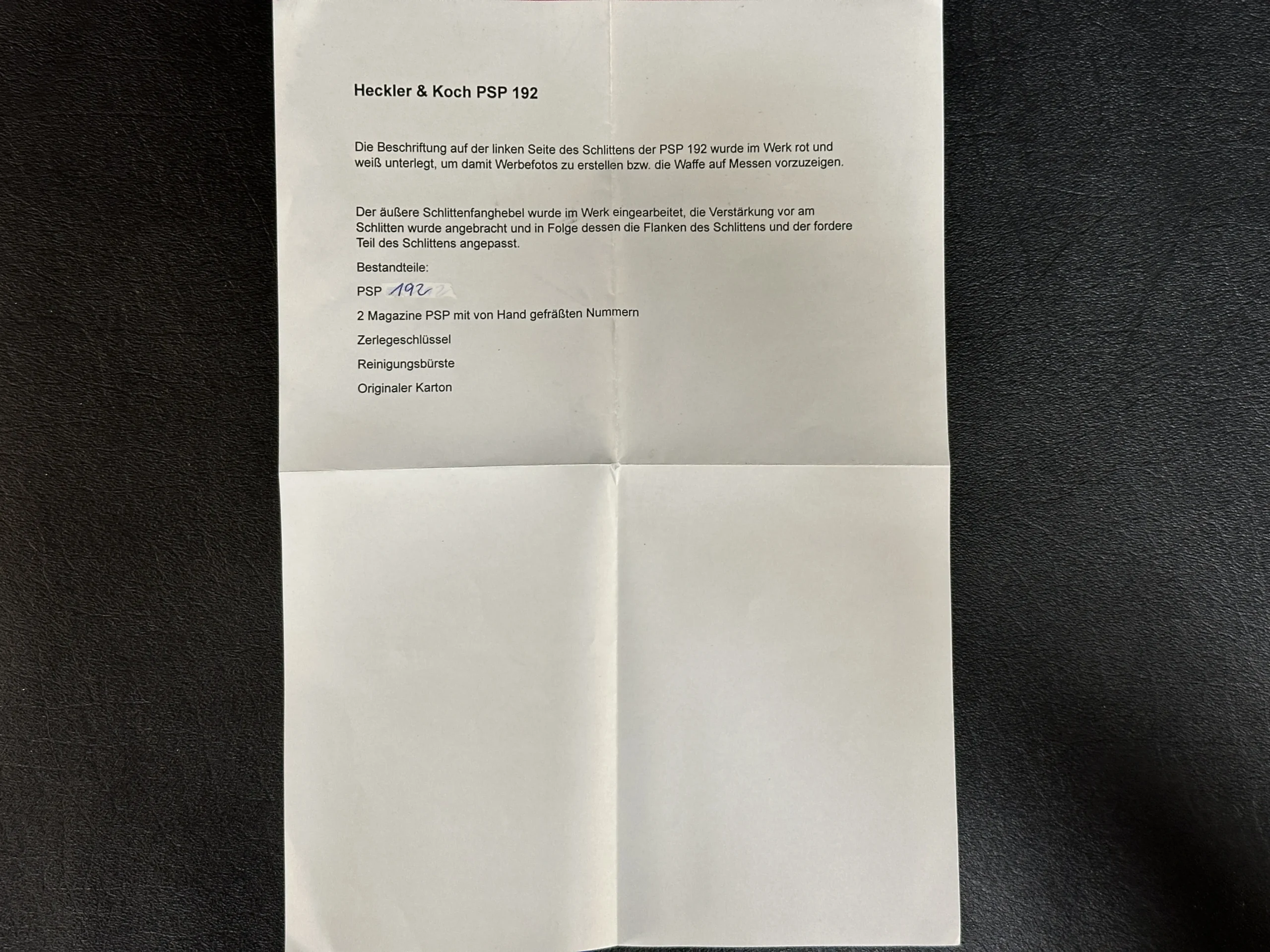Description
There’s something special about the HK P7 PSP. It’s not just the slick German engineering or the famously quirky squeeze-cocking system—it’s the feeling that you’re holding a turning point in firearms design. This early model, serial number 192, captures that moment in time when Heckler & Koch took a bold leap into the future of law enforcement sidearms. And yes, it comes with its original box and accessories—because details matter when you’re holding history.
What makes this specific P7 PSP stand out? Take a close look at the left side of the slide: you’ll see factory-applied red and white markings—an eye-catching touch used in promotional photos and trade show displays back in the day. They weren’t added later. This was H&K putting its best foot forward to the world, and somehow, this pistol kept that story intact.
Beyond the cosmetics, there are subtle—but important—factory updates: an upgraded outer slide catch lever, a reinforced front carriage, and smoothed slide flanks that show how much care went into refining the design before it became the production-standard P7. Functionally, it’s a joy. Visually? Even better.
Included are two original magazines (each hand-marked at the factory), a disassembly tool, and the original cleaning brush. Everything you’d want, right where it should be.
From Prototype to Legend: The Origins of the PSP
Back in the mid-1970s, Heckler & Koch had a problem—and a brilliant idea. Police forces were hunting for a modern, safe, easy-to-use sidearm. The engineers at H&K responded with a pistol so compact it practically vanished in your hand, yet so advanced it barely needed moving parts. No external safety. No decocker. Just that unmistakable squeeze-cocking mechanism that acted as both a safety and cocking lever.
Here’s how it worked: grip the front of the frame, and the striker system engages. Let go, and the gun safely decocks. No fuss, no nonsense—and no chance of a negligent discharge when holstering. If a mag was inserted, squeezing the handle would instantly chamber a round. It was brilliant in its simplicity and a big reason why both left- and right-handed shooters loved it—no extra levers or controls to get in the way.
The PSP’s grip angle? A natural-feeling 110 degrees. And the feeding system? Designed with almost absurd attention to geometry to handle even special-purpose ammo without hiccups.
The PSP wasn’t born overnight. It evolved alongside competitors like the Walther P5 and SIG’s P225. In July 1976, the PSP was officially introduced to German police forces. And while the designation “P7” came later—once the pistol was adopted nationally—the earliest examples, like this one, carried the original “PSP” label. Only the first 239 pistols ever made were marked this way.
But things get murky from a collector’s standpoint. Serial numbers and features didn’t always evolve in clean, predictable steps. Experimental parts, crossover models, and field-tested hybrids created a blurred line between PSP and P7. In fact, while the “official” transition to P7 happened at serial number 239, some PSP-labeled guns were assembled with later P7 features, and that makes each example a small mystery unto itself.
That’s part of what makes serial 192 so compelling. It’s early, authentic, and shows that moment of transformation frozen in steel.
The HK P7 PSP isn’t just another collectible pistol—it’s a talking piece, a working legend, and a glimpse into the innovative mindset of 1970s firearms development. Serial 192 isn’t just a number; it’s a reminder of the experimental edge that Heckler & Koch brought to the table, and the police legacy that followed.
Whether you’re a serious collector, a firearms historian, or just someone who appreciates elegant design paired with groundbreaking function, this one deserves a place in your collection.



